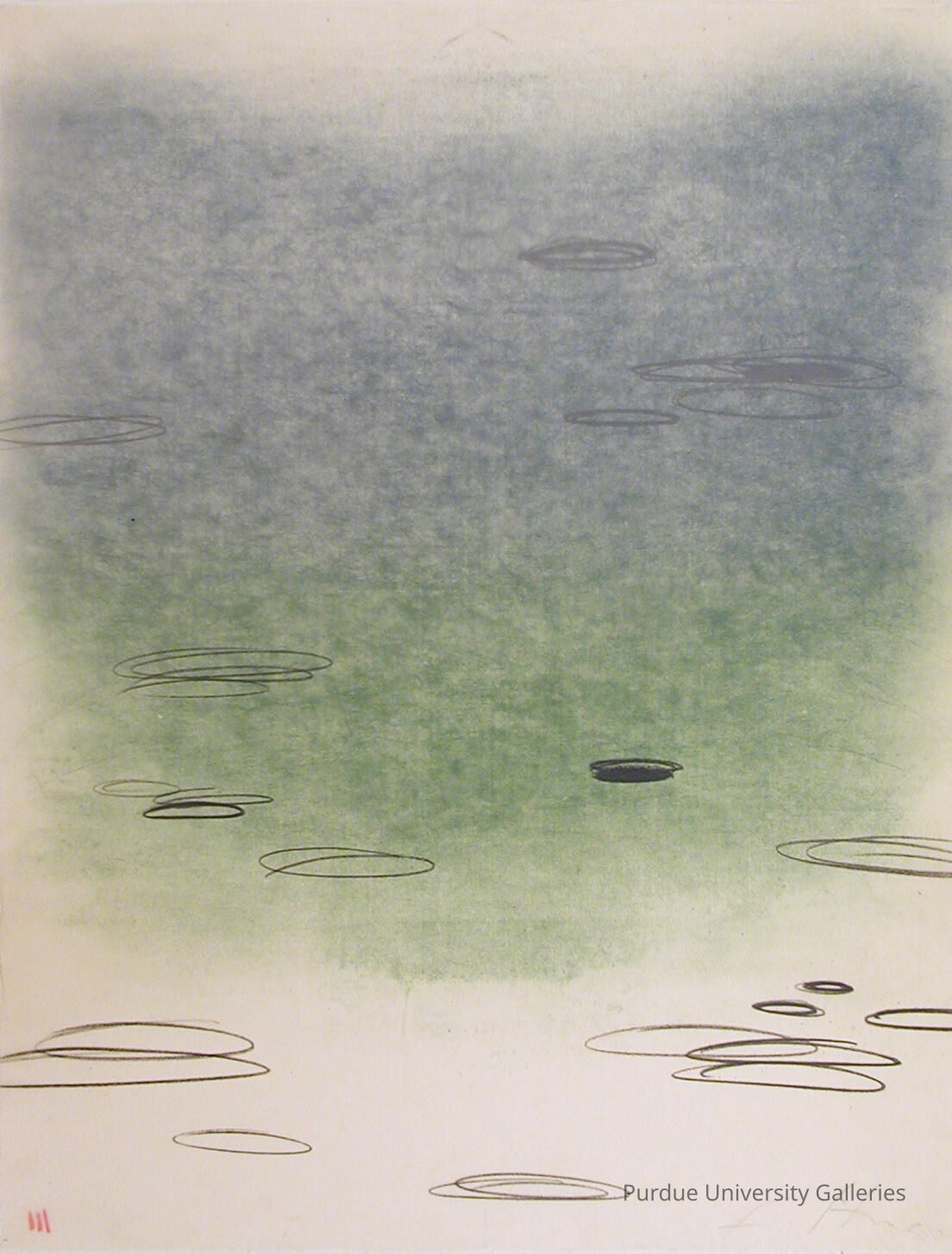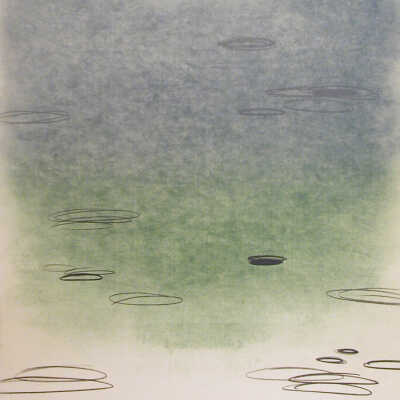Label Type
Cultural/Historical ContextLabel
Untitled
Emmi Whitehorse
Five color lithograph printed on Japanese Kozo paper, 2001
Emmi Whitehorse is a contemporary Navajo artist living and working in New Mexico. She holds the distinction of being the youngest member of The Grey Canyon Group, an influential group of contemporary Native artists who exhibited throughout the 80s and 90s. Though she is a Native artist, Whitehorse works outside the bounds of traditional Native art forms such as pottery or basketry, and does not utilize traditional Native imagery or patterns. Instead she and the other members of The Grey Canyon Group sought to break out of the restrictive visual expectations and cultural stereotypes placed on Native artists.
For Whitehorse her work is a deeply personal expression of how she perceives and experiences the natural world around her. Though she eschews visual markers of her Navajo heritage, her work is created in accordance with the Navajo philosophy of Hózhó: the respect and recognition of the harmonious balance of beauty, nature, humanity, and the universe.Label Type
Cultural/Historical ContextLabel
"Emmi Whitehorse was born in 1958 in New Mexico, and continues to live there as a Navajo artist. She graduated from the University of New Mexico with a B.A. in painting in 1980, and in 1982 she obtained an M.A. in printmaking. Since then, she has been a consistently influential Native American artist, especially active in her home state of New Mexico. Whitehorse has spent her career drawing upon memories of her childhood in New Mexico, the main inspiration for her artwork. Untitled is typical of her later production, which has become less representational and more ambiguous in imagery over time. Whitehorse’s earlier Leaf (1997)is another five-color lithograph, but it makes naturalistic allusions of various kinds through different types of foliage. Since then, her work has become intentionally less explicit, so that her art can be appreciated primarily in a sensory manner.
Whitehorse’s art has an abstract appearance while referring discreetly to the landscape of New Mexico and to the Navajo way of life. In Untitled, she uses a variety of blues and greens in the background, and floating over the color are several black oval lines. This lithograph is printed on both sides of translucent Japanese Kozo paper so the ovals diffuse through the paper in a manner reminiscent of water. After 1999, Whitehorse’s work often focused on the subject of water, and Untitled clearly seems to reflect rippling water. This has strong symbolic importance to the Navajo beliefs that one’s connection to natural surroundings is crucial to a balanced and peaceful way of life. Whitehorse focuses on light, space, and color to suggest landscape and to express a specific moment of complete immersion in nature.
Untitled is an excellent example of Whitehorse’s abstract manner, demonstrating her ability to blend realistic and abstract elements in a single work. Untitled captures a moment in time when light and color blend in an abstract, allusive way. Stylistically, Whitehorse has progressed toward greater abstraction over time, but the subject of landscape and the natural world remains a constant for expressing her personal values as a Navajo. Whitehorse’s art is a meditative reflection on nature, counteracting what she believes is a profound lack of appreciation of the environment in modern society.
Bibliography: Whitehorse 1997: 118-120; Walker 2003: 48-49; “Emmi Whitehorse: About the Artist,” Chiaroscuro Contemporary Art Gallery, Web. Apr. 3, 2011, http://chiaroscurosantafe.com/artists/21/;“Emmi Whitehorse (Navaho, b. 1958),” Spaightwood Galleries, Web. Apr. 3, 2011, http://www.spaightwoodgalleries.com/Pages/ Whitehorse.html;Whitehorse, Emmi, Biography, Exhibitions and Artist’s Statement. Web. Apr. 3, 2011, http://www. ewhitehorse.com/biography.htm; “The Fine Art Museum-Prints.”Western Carolina University - Home. Web. Apr. 3, 2011, http://www.wcu.edu/museum/.
Submitted by Robin Mahannah
---
Emmi Whitehorse cites natural forces and landscape as the inspiration for her work. Her images have been compared to those of European primitivist artists, but she claims that her influences evolve from personal experiences rather than cultural traditions."
